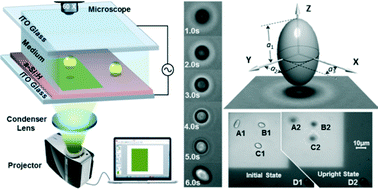Rapid determination of cell mass and density using digitally controlled electric field in a microfluidic chip
Abstract
The density of a single cell is a fundamental property of cells. Cells in the same cycle phase have similar volume, but the differences in their mass and density could elucidate each cell's physiological state. Here we report a novel technique to rapidly measure the density and mass of a single cell using an optically induced electrokinetics (OEK) microfluidic platform. Presently, single cellular mass and density measurement devices require a complicated fabrication process and their output is not scalable, i.e., it is extremely difficult to measure the mass and density of a large quantity of cells rapidly. The technique reported here operates on a principle combining sedimentation theory, computer vision, and microparticle manipulation techniques in an OEK microfluidic platform. We will show in this paper that this technique enables the measurement of single-cell volume, density, and mass rapidly and accurately in a repeatable manner. The technique is also scalable – it allows simultaneous measurement of volume, density, and mass of multiple cells. Essentially, a simple time-controlled projected light pattern is used to illuminate the selected area on the OEK microfluidic chip that contains cells to lift the cells to a particular height above the chip's surface. Then, the cells are allowed to “free fall” to the chip's surface, with competing buoyancy, gravitational, and fluidic drag forces acting on the cells. By using a computer vision algorithm to accurately track the motion of the cells and then relate the cells' motion trajectory to sedimentation theory, the volume, mass, and density of each cell can be rapidly determined. A theoretical model of micro-sized spheres settling towards an infinite plane in a microfluidic environment is first derived and validated experimentally using standard micropolystyrene beads to demonstrate the viability and accuracy of this new technique. Next, we show that the yeast cell volume, mass, and density could be rapidly determined using this technology, with results comparable to those using the existing method suspended microchannel resonator.



 Please wait while we load your content...
Please wait while we load your content...